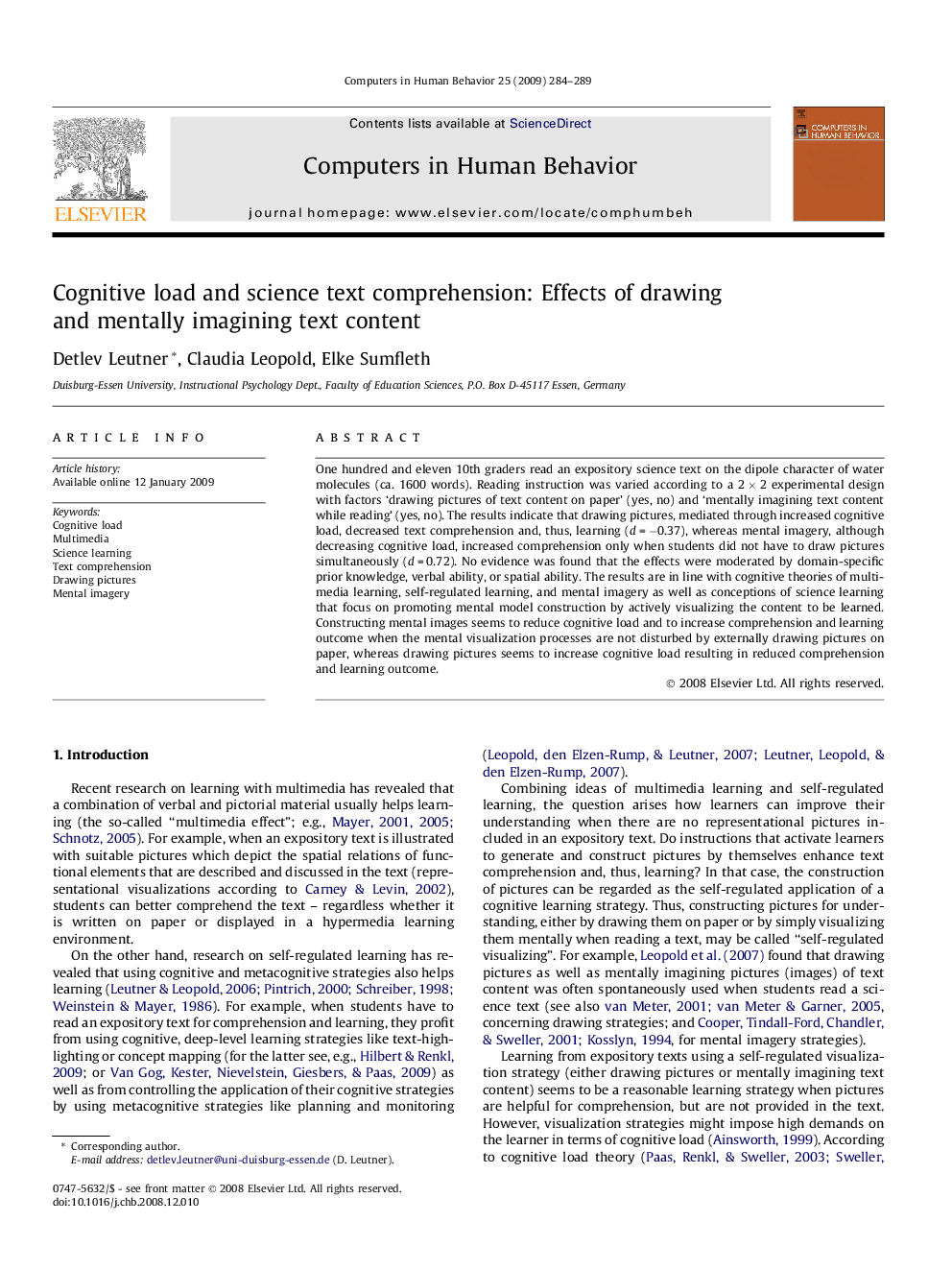| Article ID | Journal | Published Year | Pages | File Type |
|---|---|---|---|---|
| 352252 | Computers in Human Behavior | 2009 | 6 Pages |
One hundred and eleven 10th graders read an expository science text on the dipole character of water molecules (ca. 1600 words). Reading instruction was varied according to a 2 × 2 experimental design with factors ‘drawing pictures of text content on paper’ (yes, no) and ‘mentally imagining text content while reading’ (yes, no). The results indicate that drawing pictures, mediated through increased cognitive load, decreased text comprehension and, thus, learning (d = −0.37), whereas mental imagery, although decreasing cognitive load, increased comprehension only when students did not have to draw pictures simultaneously (d = 0.72). No evidence was found that the effects were moderated by domain-specific prior knowledge, verbal ability, or spatial ability. The results are in line with cognitive theories of multimedia learning, self-regulated learning, and mental imagery as well as conceptions of science learning that focus on promoting mental model construction by actively visualizing the content to be learned. Constructing mental images seems to reduce cognitive load and to increase comprehension and learning outcome when the mental visualization processes are not disturbed by externally drawing pictures on paper, whereas drawing pictures seems to increase cognitive load resulting in reduced comprehension and learning outcome.
